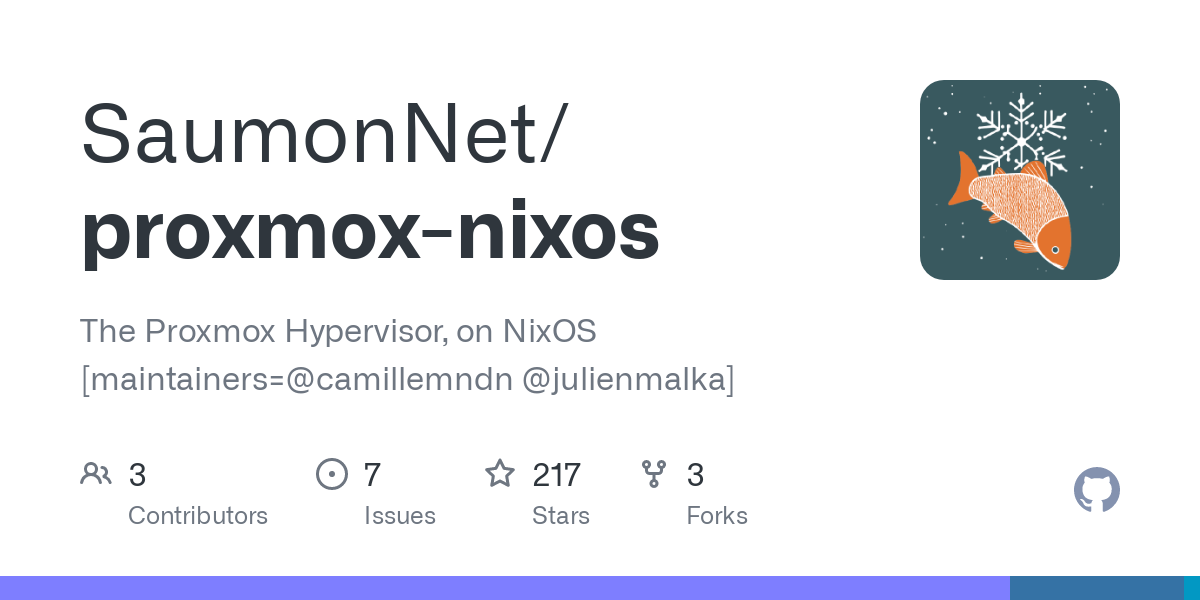SaumonNet/proxmox-nixos: The Proxmox Hypervisor, on NixOS
(github.com)
from lemmyreader@lemmy.ml to linux@lemmy.ml on 25 Jun 16:18
https://lemmy.ml/post/17288719
from lemmyreader@lemmy.ml to linux@lemmy.ml on 25 Jun 16:18
https://lemmy.ml/post/17288719
cross-posted from: lemmy.ml/post/17288716
This project is a port of the Proxmox Hypervisor on NixOS.
⚠️ Proxmox-NixOS is still experimental and we do not advise running it on production machines. Do it at your own risk and only if you are ready to fix issues by yourself.
📬 Help / Discussions
There is a matrix room for discussions about Proxmox-NixOS.
Thanks This project has received support from NLNet.

threaded - newest
Is there a point in getting this on NixOS other than just because we can?
Yeah, NixOS is great as a server/enterprise distro, so if it gets proxmox, that’s a big win imo.
From my short time with proxmox, I had to dive into the command line to do configuration at the host level that couldnt be done with the UI. I think nixos will help replacd those ad hoc configurations with nix options. In the many articles I read about gpu passthru, and also doing harddrive passthru, I had to work in the host debian environment.
I dumped proxmox because I couldnt get gpu passthrough to work, and havent looked back. Nixos modules and docker have served me better than VMs for my usecase.
I’m new on Linux, and I don’t get nixos. I know about backups and how to keep all my stuff safe and ready to easy restore and have things running as fast as possible. And I don’t use to break the OS itself regularly .
It’s not for everyone. The idea is to have your entire system reproducible with a few configuration files, which you’d then ideally store in a VCS like git.
I haven’t messed with it, but there is something appealing about the ability to reboot to an older snapshot of the system if an update breaks something, or being able to use a config file to restore your system to the exact OS version and exact versions of whatever apps you use.
I see . Seems suitable for infras with thousand of servers and is not the same backing up configuration files than whole snapshots of the OS. Don’t know how works with installed apps like nginx and their configurations.
I guess that’s where the advantages come into play the most. I only use it for a handful of machines (2 notebooks, one workstation, an SBC and 2 VPSs) and it’s still a great solution, though there is quite the overhead for the first setup.
Anyhow, that doesn’t mean that it’s more work in total than other distributions. The module system catches a lot of configuration errors for you which means you basically never and up with a “broken” configuration, and even if you did, you could select an older generation (more correct way to say rolling back on NixOS). Sure, the configuration might not do want you intended, but it will most likely be functional.
This even goes so far that some modules detect common configuration pitfalls for applications, like headers not being inherited because they got redefined.
Oh wow, this is literally what I’ve been waiting for.
Edit: OK, it’s not quite there yet.